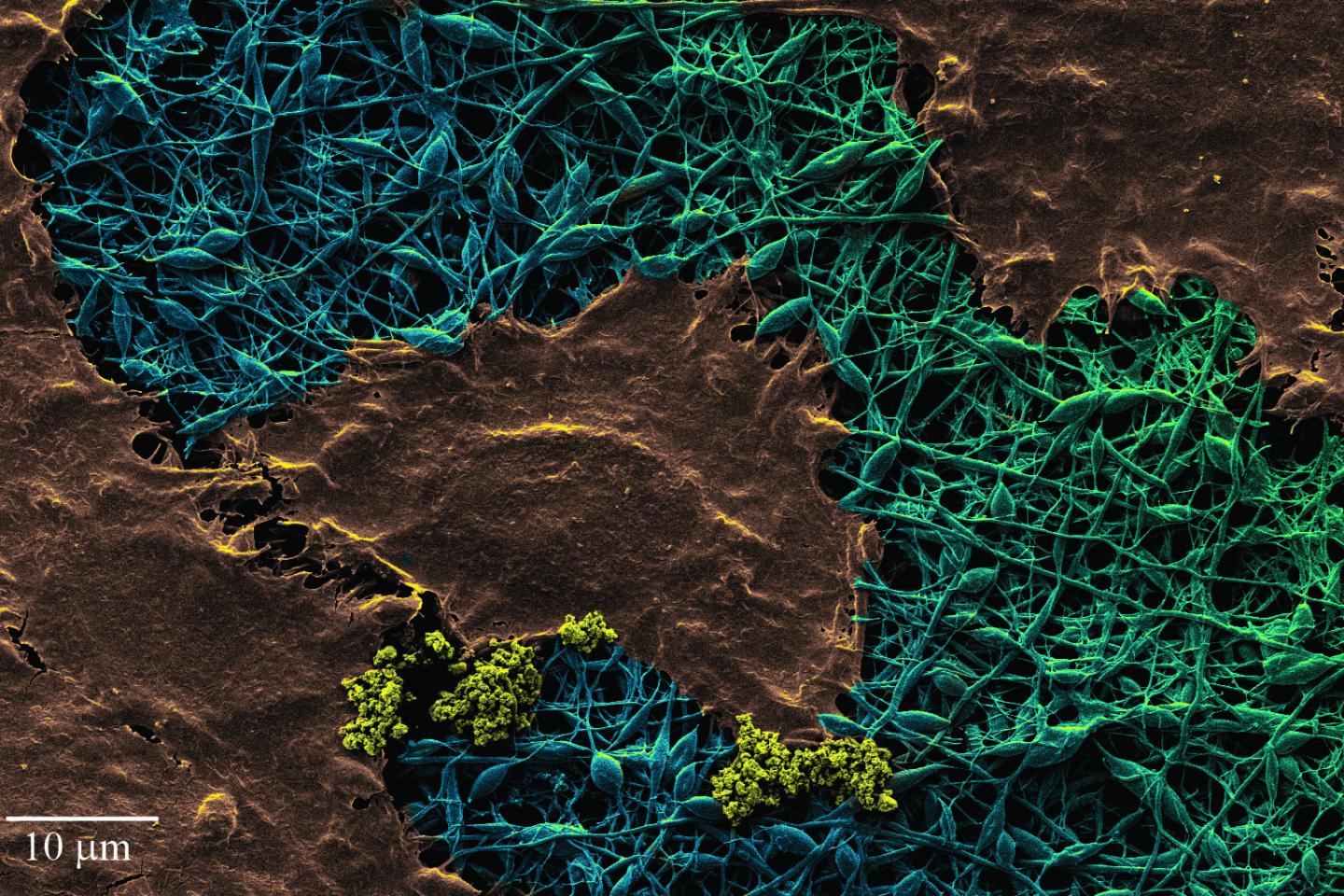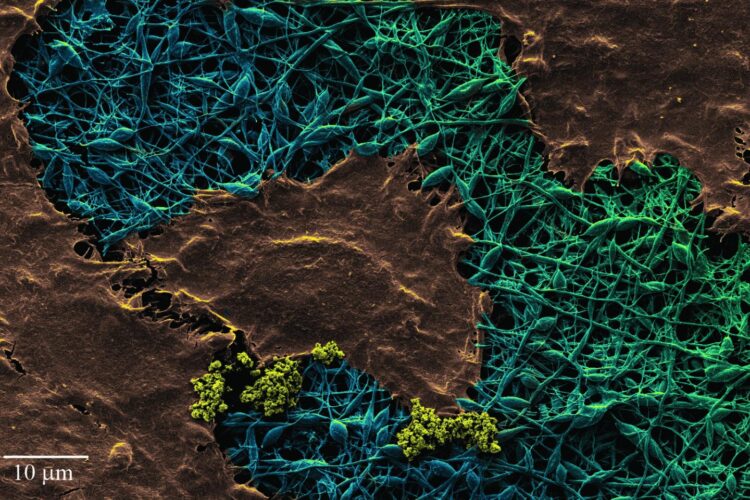
Credit: RMIT University
Scientists have developed a next generation wound dressing that can detect infection and improve healing in burns, skin grafts and chronic wounds.
In research led by RMIT University’s Dr Asma Khalid, smart wound dressings made of silk and nanodiamonds effectively sensed wound temperature, an early sign of infection, promoted healing and reduced infection from certain bacteria.
Senior researcher Professor Brant Gibson said it offered a solution to the global challenge of wound care and healing.
“Traditional wound management presents a significant challenge for clinicians, who have to regularly check for infection by looking for signs of redness, heat and swelling,” he said.
“However, once these visual signs appear, inflammation and infection are far advanced, making therapies or interventions substantially more challenging.
“This new technology would aid clinicians to detect infections earlier and non-invasively without the painful procedure of dressing removal.”
Heat sensing capability
Co-researcher and wound specialist at the South Australian Health and Medical Research Institute (SAHMRI), Dr Christina Bursill, said the smart wound dressing was a potential game changer.
“As a non-invasive measurement of wound temperature, this new technology provides a highly accurate way to monitor wound quality, compared to the very subjective method of visual assessment,” she said.
To incorporate the heat sensing capability, the team turned to diamonds which are known to detect biological temperature to a highly precise level.
“By embedding nanodiamonds into silk fibres using an electrospinning process, we’ve been able to develop a naturally derived wound dressing that can sense infections,” Vice-Chancellor Fellow at RMIT Dr Asma Khalid, explained.
“The heat sensing capability opens the possibility of contactless wound monitoring by clinicians who would be able to obtain information on the wound’s status from the nanodiamond temperature readout.”
Bacterial resistance
The study in ACS Applied Materials & Interfaces also tested the hybrid technology for resistance to gram-negative and gram-positive bacteria, the major players in skin wound infections.
“These leading causes of wound or surgical infections in healthcare settings are increasingly resistant to most available antibiotics,” Khalid noted.
“We were very excited to find the nanodiamond silk membranes showed an extremely high antibacterial resistance to gram negative bacteria,” she said.
The study shows the smart membranes can detect early signs of infection and protect wounds from certain bacteria and infection, while also maintaining the flow of oxygen and nutrients to the area.
“Realising this exciting new technology would provide a beneficial and cost-effective solution to the increasing challenge of wound management and healing,” Khalid said.
###
The research consortium included scientists from RMIT University, the Universities of Adelaide and Melbourne, Flinders University, SAHMRI and the Australian Research Council (ARC) Centre of Excellence for Nanoscale BioPhotonics (CNBP).
The work was supported by RMIT University’s Vice Chancellor Fellowship and the ARC through the CNPB and a Linkage Infrastructure, Equipment and Facilities (LIEF) grant.
‘Electrospun nanodiamond-silk fibroin membranes: a multifunctional platform for biosensing and wound healing applications’, with lead author Dr Asma Khalid is published in ACS Applied Materials & Interfaces (DOI: 10.1021/acsami.0c15612)
Image captions
Scanning electron microscopic (SEM) images of the diamond-silk dressings.
Image 1: Diamond silk fibres forming porous membranes, shown in bluish green colour, with the golden-brown colour showing the skin cell growth on the membrane.
Image 2: Diamond silk fibres forming porous membranes, shown in bluish green colour, with the golden-brown colour showing the skin cell growth on the membrane (closeup view).
Credit: RMIT University
Media Contact
Diana Robertson
[email protected]
Related Journal Article
http://dx.





